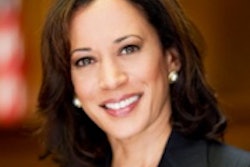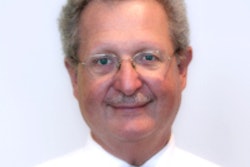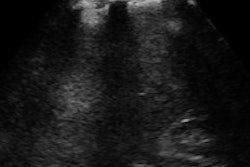
Radiologists no longer predominate in the performance of ultrasound-guided procedures, which may have implications for the quality of patient care, according to a study published online in the Journal of the American College of Radiology.
Ultrasound is being used more and more for guidance during procedures, and the growth has been especially high in private offices, a trend that should be tracked just as much as nonradiologist ownership of CT, MR, and PET devices, wrote Dr. Richard Sharpe Jr. and colleagues from Thomas Jefferson University.
 Dr. Richard Sharpe Jr. from Thomas Jefferson University.
Dr. Richard Sharpe Jr. from Thomas Jefferson University."More research is needed to discern whether increases in utilization of ultrasound-guided procedures are the result of increased adoption of US guidance for procedures that would have been previously performed without US guidance or whether the increased utilization reflects a lower threshold among nonradiologists for performing these procedures because they had acquired US capabilities," they wrote. "The latter could raise concern for self-referral, depending on the clinical appropriateness of these procedures."
Sharpe and colleagues used data from the U.S. Centers for Medicare and Medicaid Services' (CMS) Physician Supplier Procedure Summary Master Files between 2004 and 2010. They extracted billing claims submitted for ultrasound-guided procedures, analyzed volume by provider type and setting, and calculated compound annual growth rates (JACR, September 27, 2013).
They found that the total utilization rate for all ultrasound-guided procedures increased by 100.8% over the time period, from 2,425 procedures per 100,000 Medicare patients in 2004 to 4,870 procedures per 100,000 patients in 2010, for a compound annual growth rate of 12.3%.
The year 2010 was the first that nonradiologists as a group performed more ultrasound-guided procedures than radiologists, at 922,672 versus 794,497 examinations, respectively.
In addition, the team discovered the following:
- Nonradiologists accounted for 72.2% of the volume growth in ultrasound-guided procedures from 2004 to 2010.
- Most 2010 claims were submitted by radiologists (46.3%) and surgeons (19.4%).
- The largest overall volume increases from 2004 to 2010 were seen among radiologists, surgeons, anesthesiologists, rheumatologists, primary care physicians, and nonrheumatologist internal medicine subspecialists.
Some of the increase in the use of ultrasound guidance is likely due to it being added to certain procedures, such as joint aspirations, steroid injections, and tissue biopsies, Sharpe's group wrote. And some of the increase may be because of nonradiologist ownership of the devices. There are benefits to patients in this latter scenario in terms of convenience, but it's important to make sure that these procedures are being performed by properly trained providers and for suitable clinical uses.
"The safe utilization of ultrasound in one's practice requires extensive training," Sharpe and colleagues concluded. "The efficient allocation of healthcare resources, patient safety, and healthcare quality all depend on these procedures being performed for the appropriate clinical indications and by individuals with appropriate training."



















